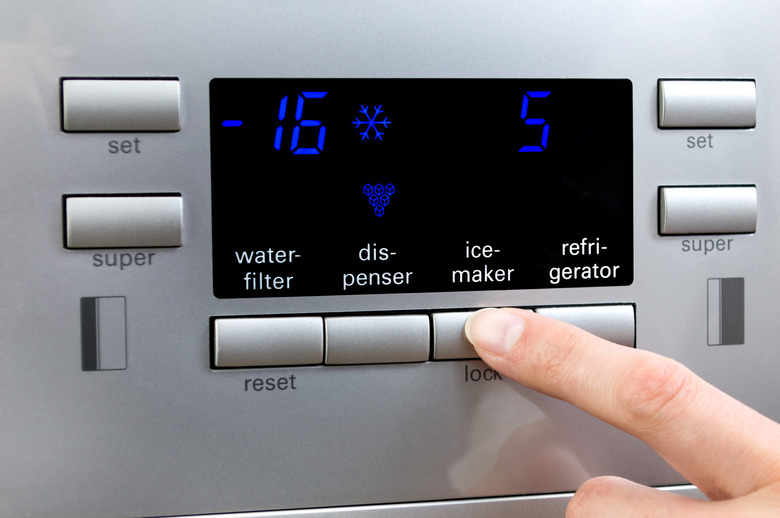How To Cap An Icemaker Supply Line
If your refrigerator has an ice maker or a water dispenser, it has to be connected to a water supply line, and that line can leak. It's good to remember this if you ever have to move the refrigerator, because the tubing is fragile and putting pressure on the connector can break the water seal. In fact, if you don't use the ice maker, it's a good idea to disconnect this line and cap it.
Damage from Leaking Water Lines
Damage from Leaking Water Lines
A leaking refrigerator supply line can cause more damage than you might expect, and you could find yourself in a horror story like the one reported at Daybreak Houses. In that story, water from a slow leak seeped under the hardwood flooring in the kitchen and warped the floorboards. The homeowners had to re-finish the floor before they could sell the house.
You might think you can prevent this by turning off the supply valve, and in most cases you can. But refrigerator supply line valves tend to corrode, and if that happens in your house, water damage could become extensive before you know about the leak. You might be lucky and find water pooling behind the refrigerator, which gives you an early clue, but it's just as possible that the water will disappear into the wall or under the flooring.
Installing Cap for Ice Maker Line
Installing Cap for Ice Maker Line
You can get a refrigerator water line cap at Home Depot or, if it's more convenient, you can also get a refrigerator water line cap at Lowes, your local hardware store or a plumbing supply outlet. Most refrigerator supply lines are 1/4 inch in diameter, and they terminate with a male or female compression fitting. The cap simply needs to be the right size to screw onto this fitting.
To determine which type of fitting you have, you need to look behind the refrigerator. Pull the appliance away from the wall carefully to avoid putting pressure on the fitting, then unplug the refrigerator and turn off the valve for the water supply. You may have to search a bit for the valve, which could be under the kitchen sink or even in the crawl space underneath the kitchen floor.
Unscrew the connector using locking pliers and purchase a cap or plug that will fit it. It's easy to install the cap — just screw it on. Once it's tight, turn on the water to make sure it doesn't leak, then turn the water off again, and you're ready to plug in the refrigerator and push it back against the wall.
Disconnect and Remove Supply Line
Disconnect and Remove Supply Line
The refrigerator supply line often connects to one of the kitchen sink faucet shutoff valves. If that's the case in your house, the best option is to unscrew it from the valve and cap the valve. The valve will have two outlets, and since one of them feeds the faucet, the valve has to be left on, which is why capping the other outlet is necessary.
It's just as easy to find a cap for a water valve as it is to find one for the supply line connection. You'll probably need a 1/4- or 3/8-inch brass compression cap. Just tighten it on with a wrench or a set of locking pliers, turn on the water valve and make sure it doesn't leak. You can then remove the ice maker supply line entirely or you can leave it in place, but either way, you won't have to worry about it leaking.
